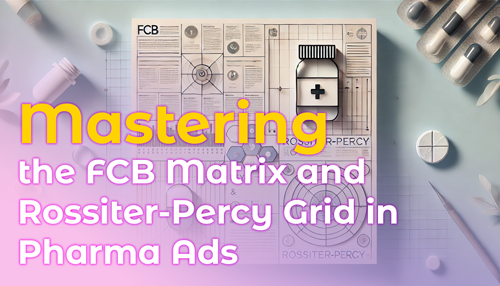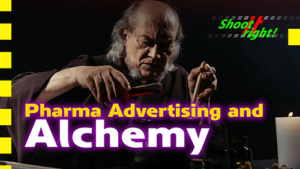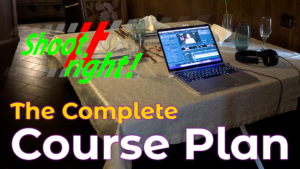As part of my advertising course, I aim to equip you with the essential tools and frameworks that professionals use to craft successful campaigns. Learning how to tailor your advertising strategies to different consumer behaviors is crucial, especially in complex fields like pharmaceuticals. In this article, we explore the FCB Matrix and Rossiter-Percy Grid, two vital frameworks that help marketers align their messages with the right audience motivations and involvement levels. Mastering these concepts will not only enhance your ability to create effective ads but also deepen your understanding of consumer psychology, a key skill for anyone in the advertising industry.
The FCB Matrix: Tailoring Your Message Based on Involvement and Motivation
The FCB Matrix, developed by Richard Vaughn at Foote, Cone & Belding, divides consumer decision-making into four quadrants based on the level of involvement (high or low) and the type of motivation (thinking or feeling). Each quadrant represents a different consumer approach, and therefore, a different advertising strategy.
- High Involvement/Thinking: Products like prescription drugs or medical devices often fall into this category. Consumers need detailed information and logical reassurance before making a decision. Ads in this quadrant should focus on factual, informative content, such as clinical results, expert testimonials, and the product’s unique benefits.
- Low Involvement/Thinking: OTC medications often belong here. Since these products are bought frequently and without much consideration, the advertising should focus on reinforcing brand trust and ease of purchase. Simplicity and repetition are key.
- High Involvement/Feeling: Some products, like those that improve long-term health conditions (e.g., supplements for managing arthritis), need both emotional and informational appeals. Advertising should combine patient stories with clinical benefits to create a strong emotional connection.
- Low Involvement/Feeling: Products like wellness supplements often fit into this category. Advertising should highlight lifestyle benefits in an enjoyable and relatable way. Light, feel-good messaging combined with a positive visual appeal can be effective here.
The Rossiter-Percy Grid: Understanding Consumer Motivation and Involvement
The Rossiter-Percy Grid is another key tool for crafting advertising strategies. It categorizes products based on informational (problem-solving) and transformational (experience-enhancing) motivations, as well as the level of consumer involvement.
- Informational Motivation: Products that solve specific health problems, such as pain relievers or prescription medications, require advertising that emphasizes how the product works and why it’s the best solution. Ads should be straightforward, focusing on relief and trust.
- Transformational Motivation: Products like supplements that promise to enhance wellness or improve lifestyle belong here. These ads focus more on how the product makes consumers feel—whether it’s increased energy or a better quality of life.
By combining these motivational factors with the level of consumer involvement, the Rossiter-Percy Grid provides a clear path for determining whether an ad should be primarily emotional or rational in its appeal.
How These Models Shape Pharmaceutical Advertising
For pharmaceutical brands, these models are not just theoretical—they offer actionable strategies. For high-involvement products, such as prescription medications, detailed and evidence-based advertising is critical. This might involve educational campaigns, patient testimonials, or expert endorsements.
On the other hand, for low-involvement products, like OTC medications or general wellness supplements, advertising should be simpler, focusing on brand recognition and ease of access. Repetition is key to keeping these products top of mind.
As the pharmaceutical advertising landscape continues to evolve, these models will help ensure that your campaigns are finely tuned to meet consumer expectations and behaviors.
Final Thoughts
Applying the FCB Matrix and Rossiter-Percy Grid in pharmaceutical advertising is an effective way to align your message with the specific needs and motivations of your audience. Whether your goal is to inform, persuade, or create an emotional connection, these models provide a roadmap for success in an increasingly competitive marketplace. If you’re looking to optimize your advertising strategies for pharmaceutical goods, these frameworks offer invaluable guidance.







